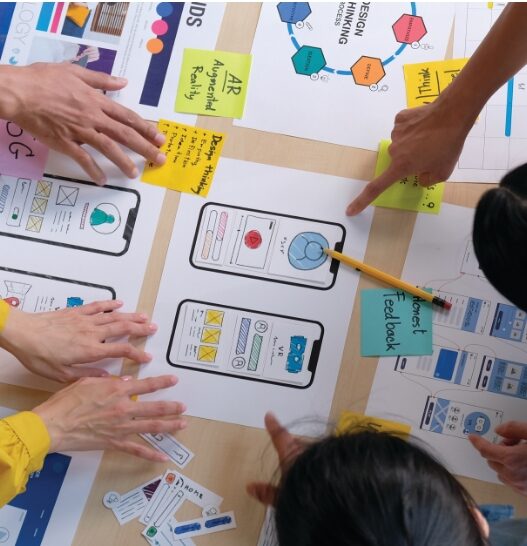You already know that the user experience is fundamentally important for a good product? Are you wondering how the user experience, or UX for short, is tested and improved? This basic terms article provides you with clear and understandable answers.
We clarify the following questions for you:
- What exactly is UX testing?
- Why is UX testing so important for your product?
- How do you achieve the most effective UX testing possible?
After reading, you’ll have a very clear picture of what UX testing looks like and the benefits it can offer you in product development.
Definition UX Testing
A quick refresher: according to DIN EN ISO 9241-210, user experience, or UX for short, is “the perception and reaction of a person to the use or expected use of a product.”
UX testing is the execution of one or more tests to verify the user experience of a product with real users. In other words, it evaluates and makes measurable how users react to a product.
Probably the most common goal of UX testing is to derive data-based suggestions for improving your product. The data you will gain in your testing will then be “translated” by a UX designer into a more user-friendly design. In this way, a product with measurably increased UX can be developed, or an existing product can be noticeably improved over its predecessors.
It is not always necessary to test a finished product – in fact, we recommend just the opposite. Often, early prototypes of a product or software are evaluated on concept level during UX testing. This can happen through quantitative methods, but also through qualitative interviews. A mix of both methods can often deliver the best results here.
The process usually happens iteratively with the goal of achieving an improved product with each run. Start UX testing as early as possible in the development process and get your prototypes adapted for iterations cheaply and quickly. This saves time and, most importantly, money.
Usability and User Experience Testing – do they belong together?
While Usability Testing aims to evaluate the safe and effective use of a product, UX Testing focuses on the user experience and subjective perception. Good usability is considered the foundation for good UX. A product that is awkward to use, ineffective, and in the worst case even poses safety risks, will never be able to evoke a positive user experience. Exception: joke products like finger traps.
Strictly speaking, Usability Testing and User Experience Testing can be two independent processes. In practice, however, the two are combined because UX and usability influence each other. So to develop a successful product, you should do Usability and User Experience Testing together.
Why is UX testing so important for your product?
You can’t guess how users will react to your product. Accordingly, you need to test the user experience. Potential clients now take a good UX for granted, as they are surrounded by tech and software products that do a lot in this area and set the bar accordingly high. Due to rapid technological development, clients are becoming more demanding and what was a unique selling point of a product yesterday is a basic requirement today.
Without UX testing, it becomes impossible for you to improve the UX in a targeted manner and thus meet user expectations. With UX testing, you have clear metrics about your product’s UX and therefore clear starting points for improvement. In the process, even small groups of users can reveal a lot of potential flaws in your product. What the Nielsen Norman Group so aptly put into words applies to your UX design: “[…] any data is better than not data” (source).
Once you have collected important data on user perception through UX testing, you can make product decisions based on this data and no longer have to rely on your gut feeling here. Arguing your case to third parties for these decisions is also made much easier if you can back them up with the data from your tests.
One third of IT development teams first experience many problems with their own products through the end user (source). This can be avoided by incorporating UX testing early in the development process. Before your product is launched, you can learn from negative feedback without incurring major costs and damage to your image.
If a product is only on the market and reveals essential problems of the user experience, which are reported back to you in bad reviews or a very high number of support tickets, measures for improvement are much more expensive than before the market launch. You can also avoid a bad reputation for your product by incorporating UX testing and UX design early on. Your mindset here: “I’d rather get uncomfortable feedback at a time when I can implement it easily, efficiently, and cost-effectively than after launch, when every product adjustment costs many times more.”
How do you achieve purposeful and good UX testing for your product?
Conclusion
With UX testing, the user experience of one’s own product can be made measurable and improved accordingly. Testing should be done with real users from the right target group to get valid results. The earlier you can integrate testing into your development process, the better.
Have you already gained experience with UX testing? Feel free to share your empirical data in the comments or get in touch with us via our contact form. We look forward to hearing from you.



